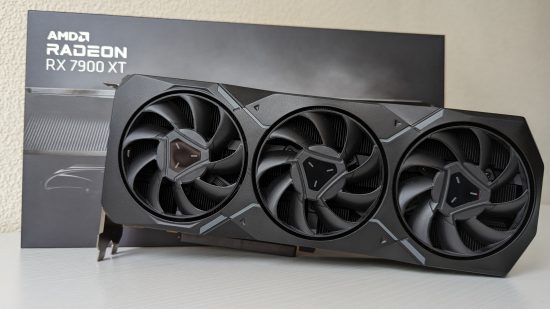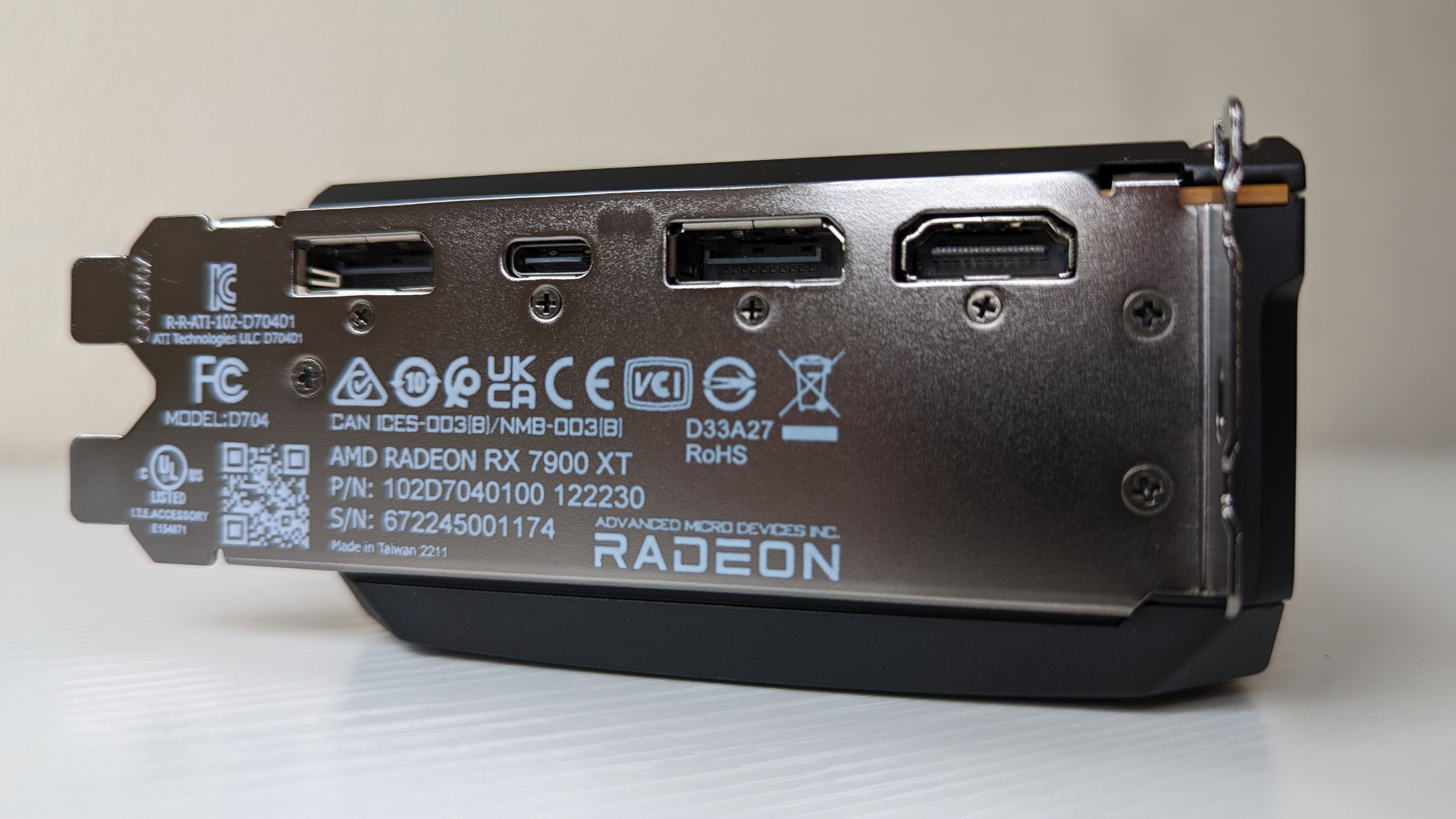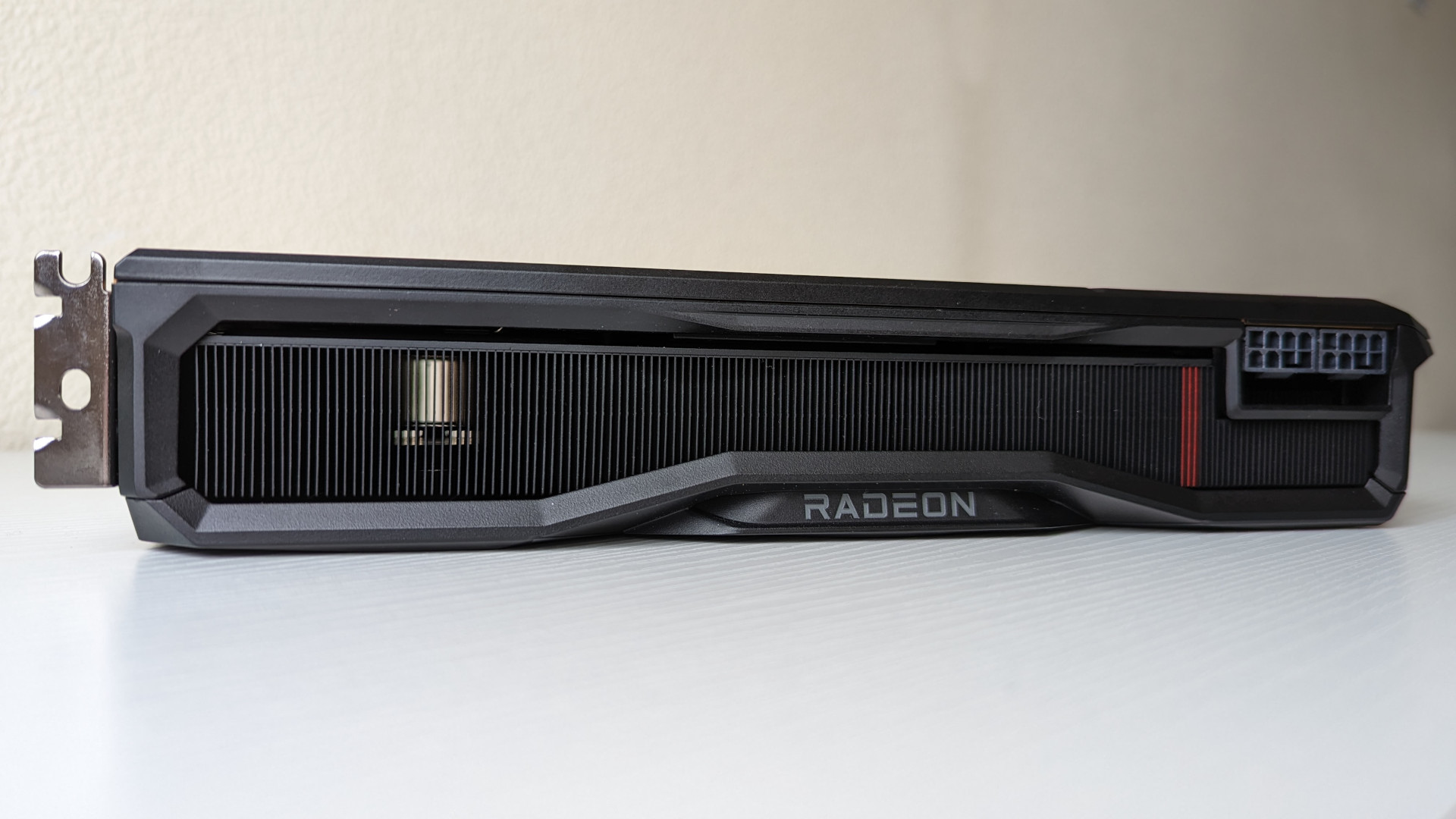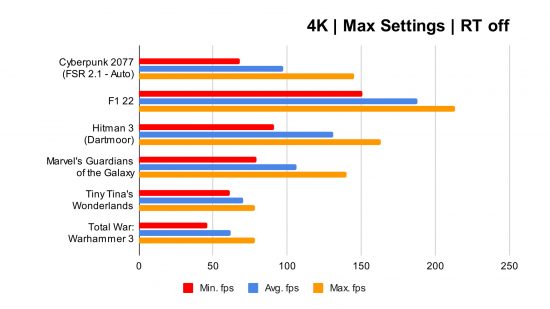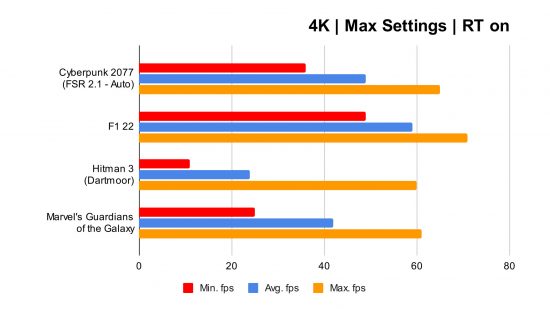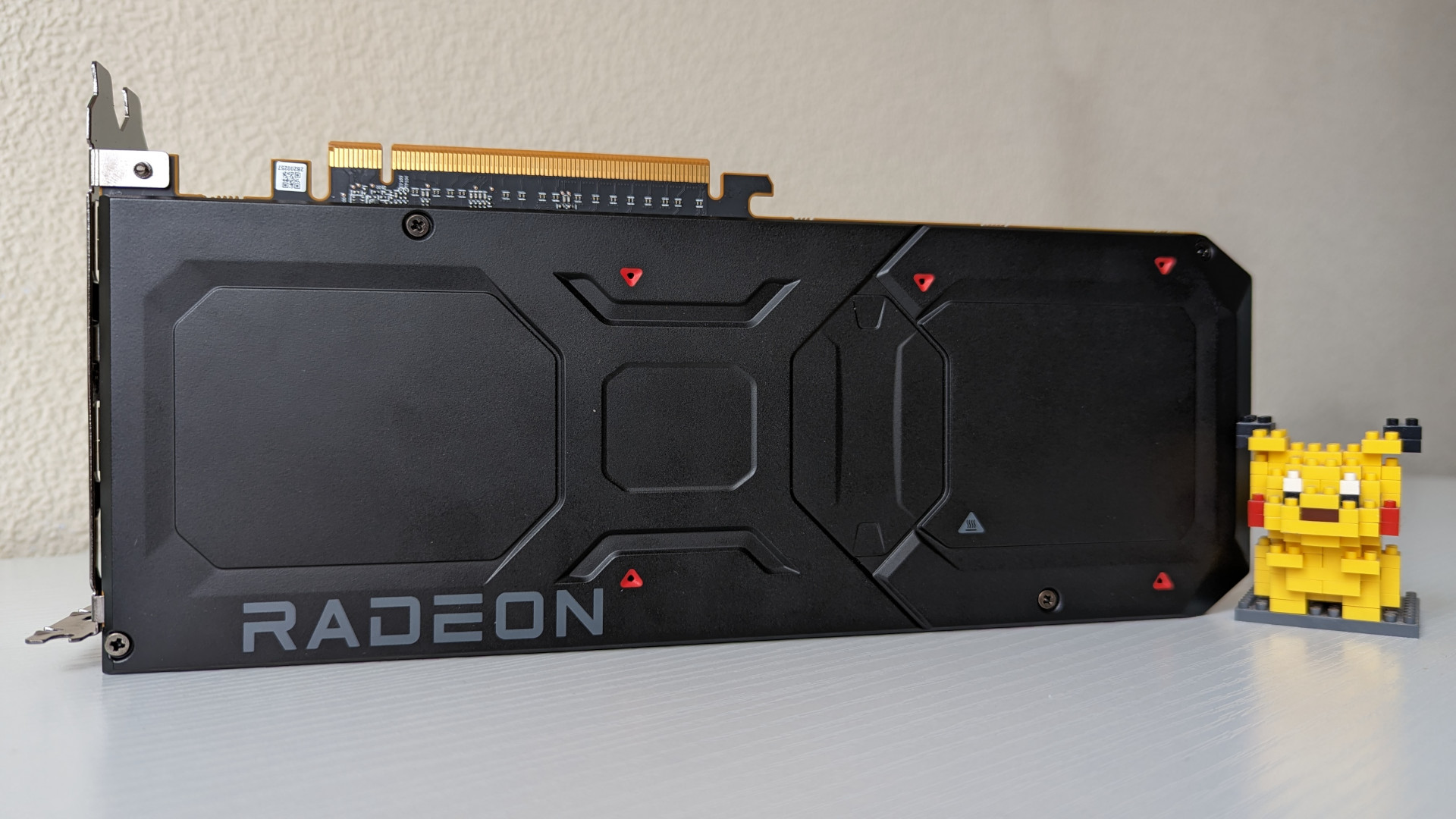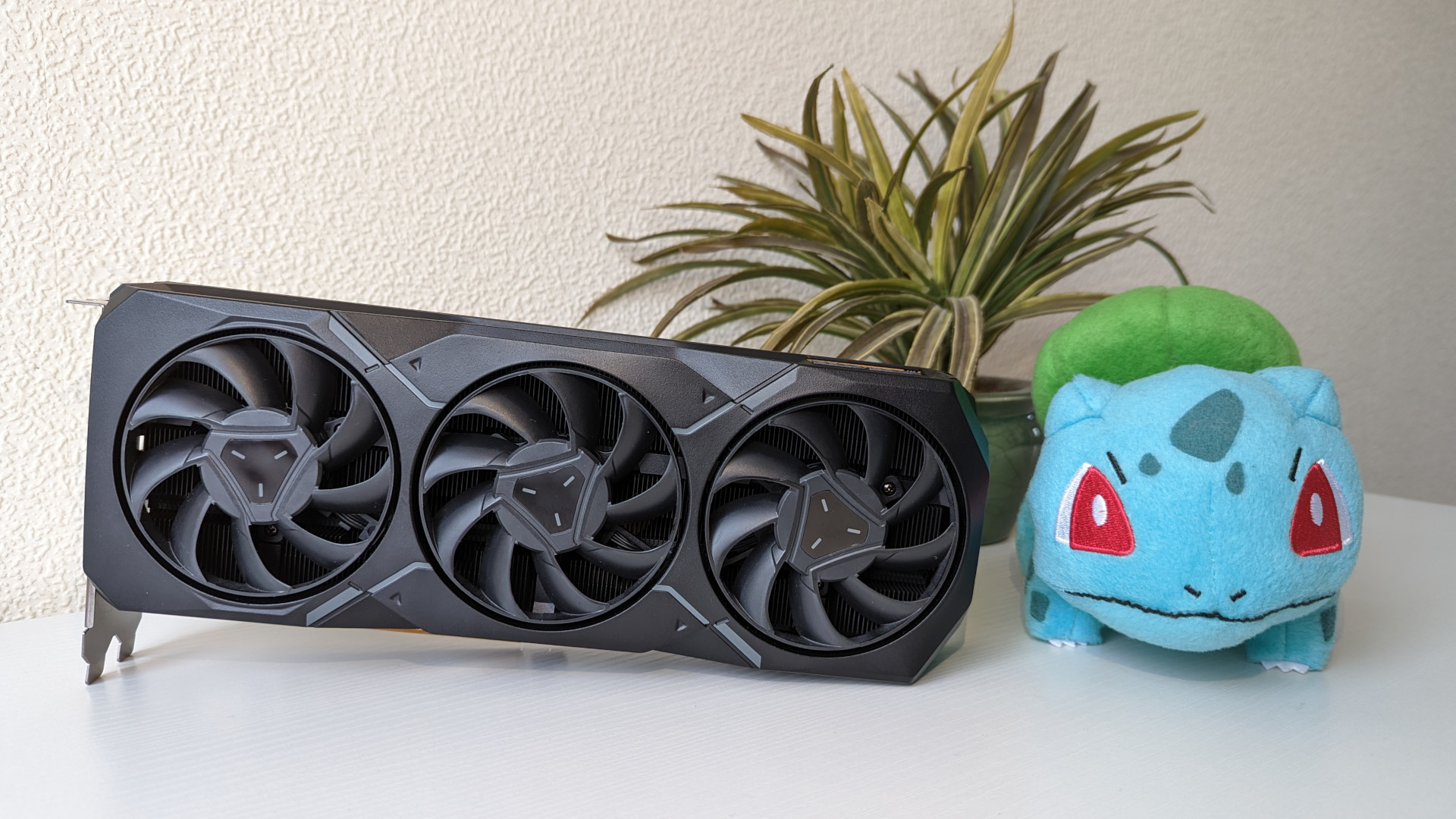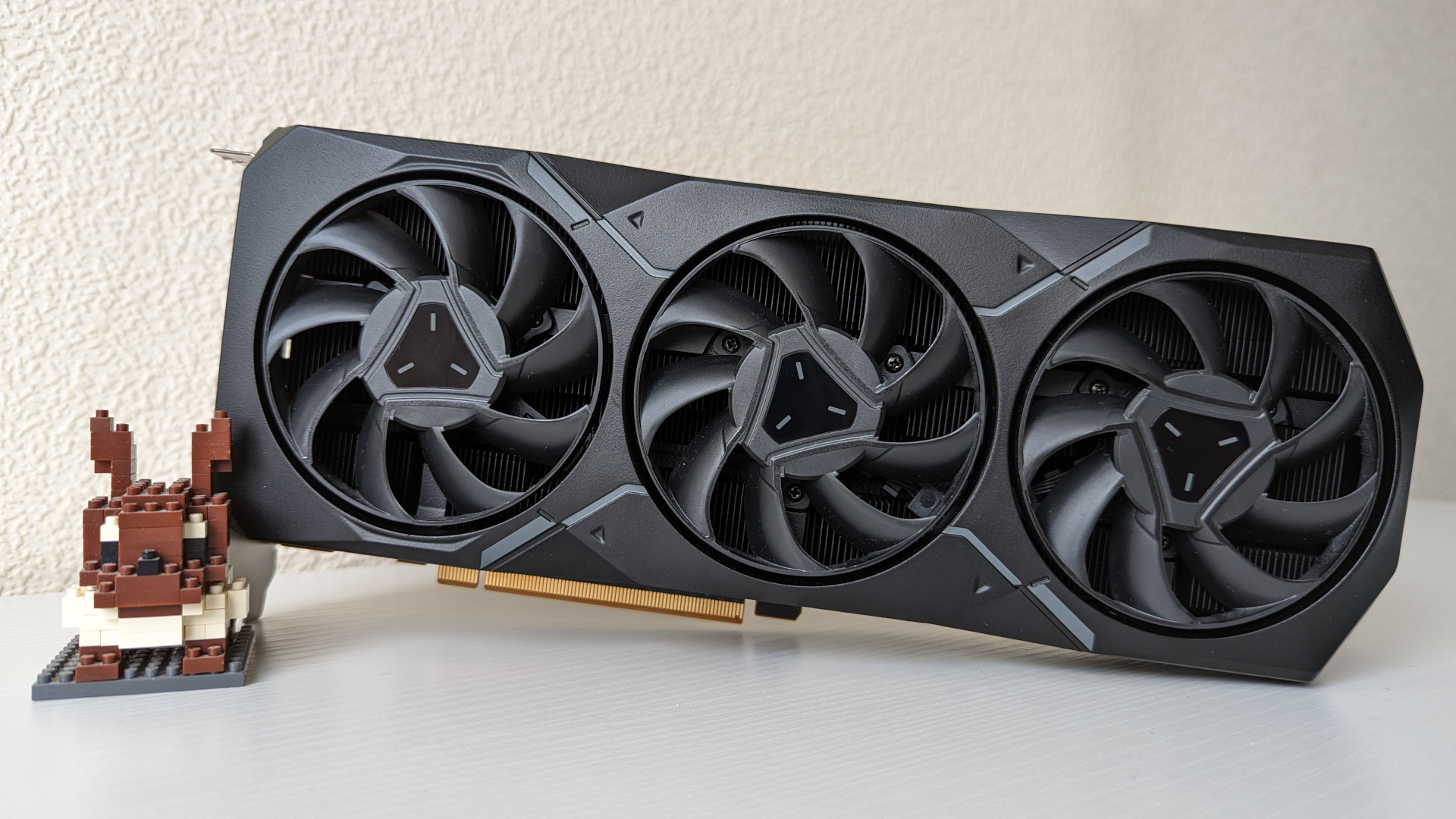Our Verdict
Strong rasterisation performance isn't enough to make up for the AMD Radeon RX 7900 XT's shortcomings, including lacking ray tracing frame rates and no answer to DLSS 3 Frame Generation
The AMD Radeon RX 7900 XT aims to offer a slightly cheaper way to get on board the RDNA 3 GPU train. It boasts similar specs to its more expensive sibling and offers significant performance improvements over its predecessor, including more powerful ray accelerators. Unfortunately, it feels there’s little to no reason you should pick this particular pixel pusher over alternatives from within the Radeon RX 7000 series lineup and competing options.
It pains me to say, but if the Radeon 7900 XT is anything to go by, we’ll need to wait a while longer to see AMD stage a Ryzen-style disruption in the race for best graphics card crown against its competitors. This isn’t to say it’s a bad piece of kit, far from it, but it’s not particularly compelling in any respect either due to its price.
To AMD’s credit, I’ve spent the past month daily driving the RX 7900 XT, and it’s proven a reliable and cool companion across the variety of games I’ve thrown at it. It’s been nothing but smooth sailing, whether we’re talking about driver stability, noise levels, or temperatures.
AMD Radeon RX 7900 XT specs
Looking at the RX 7900 XT specs reveals that this pixel pusher is effectively a cutback version of its more expensive sibling. It uses the same Navi 31 GPU but packs fewer stream processors, compute units, and second generation ray accelerators in addition to slower clock speeds. While the XT uses the same GDDR6 VRAM, it wields less of it, and its memory bus width and clocks fall behind the RX 7900 XTX too.
| AMD Radeon RX 7900 XT specs | |
| GPU | Navi 31 |
| Stream processors | 5,376 |
| Compute units | 84 |
| Ray accelerators |
84 (2nd Gen.) |
| Base clock | 1,385MHz |
| Game clock | 2,025MHz |
| Boost clock | 2,395MHz |
| VRAM | 20GB GDDR6 |
| Bus width | 320-bit |
| TBP | 315W |
| MSRP / RRP | $899 USD / £899 GBP |
All of these reductions mean it at least draws less power, but you’ll still need to pair it with a premium power supply. Its 315W TBP puts the RX 7900 XT just 5W behind the Nvidia GeForce RTX 4080, and shouldn’t be paired with anything less than a 750W PSU. However, you won’t need to fork out for an ATX 3.0 PSU or endure the hassle of a fiddly dongle, as it uses tried and tested dual 8-pin connectors rather than the 16-pin plug you’ll find on RTX 4000 graphics cards.
AMD made a big song and dance about including DisplayPort 2.1 inputs on its Radeon RX 7000 series cards during its reveal event, and you’ll find two on the 7900 XT alongside a single USB Type-C and HDMI 2.1 port. This theoretically makes the GPU capable of supporting 4K monitors with refresh rates up to a staggering 480Hz, and even 8K screens at 165Hz.
I say theoretically because the card simply isn’t capable of hitting those limits in most games, even with AMD FSR. This advancement is welcome from a future proofing standpoint, but isn’t by any means a standout feature right now.
The RX 7900 XT is a handsomely equipped card that offers several upgrades over its predecessor, but it’s hard to ignore just how close its specifications are to the RX 7900 XTX, as there’s just $100 between them. Normally, the less expensive card should offer better value, but I’ll need to spend some time with the 7900 XTX to be sure.
AMD Radeon RX 7900 XT size and design
For those concerned that the RX 7900 XT is yet another addition to the ever-growing ranks of gargantuan graphics cards that started with the Nvidia GeForce RTX 4090, you can breathe a sigh of relief. AMD’s two-slot reference design is reasonably sized and should fit into most ATX PC cases, and I think it makes for a handsome addition to any build thanks to its largely muted, almost industrial design.
AMD leans more towards the dark side with its 7900 XT colour scheme, closely resembling the refreshed ensemble of 6000 series cards we saw release last year. Look closely, though, and you’ll see the ‘R’ that once occupied the centre of each of the three fans has been replaced with a more minimal design.
There’s nary a trace of RGB on the 7900 XT, which suits me just fine. The only splashes of colour you’ll find are a red stripe along the heatsink and on the backplate. All of what I’ve described only applies to the reference design, of course, so you’ll be able to get your LED fix with board partner cards. Just bear in mind that their coolers will likely be much larger and approach the size of the Nvidia GeForce RTX 4070 Ti and 4080.
The RTX 4000 Founders Edition models are personally still top of the pile for me when it comes to styling, but the 7900 XT isn’t far behind. I just wish both AMD and Nvidia would release white versions of their reference designs already (come on, folks).
AMD Radeon RX 7900 XT benchmarks
In order to put the RX 7900 XT through its pace, I’ve run all my benchmarks at a native 4K Resolution, save for my runs of Cyberpunk 2077 which uses AMD FSR.
Here are the specs of our test system:
- OS: Windows 11 Pro (22621.1105)
- GPU: AMD Radeon RX 7900 XT
- Motherboard: Asus TUF Gaming X670E-Plus
- CPU: AMD Ryzen 5 7600X
- RAM: Corsair Vengeance 32GB (2 x 16GB) DDR5 6,000MHz
- SSD: SK Hynix Platinum P41 2TB
- PSU: Corsair HX1200i
AMD Radeon RX 7900 XT performance
Even at 4K, the 7900 XT can push out some seriously impressive frame rates. Its best showing in our test suite is undoubtedly F1 22, with the GPU pushing out an average frame rate of 188fps. Hitman 3 and Marvel’s Guardians of the Galaxy also see triple digit performance numbers, while Cyberpunk 2077 isn’t far behind at 97fps (albeit with AMD FSR helping to bolster things).
Things become a little more dicey when looking at Tiny Tina’s Wonderlands and Total War: Warhammer 3. The Borderlands spin-off runs at a respectable 70fps average, but minimum frame rates just about manage it over the 60fps line. Meanwhile, the RTS game brings RDNA 3 down a notch, with averages of 62fps lows of 46fps.
We don’t currently have 7900 XTX numbers to compare this against yet. However, we can compare these results against the 7900 XT’s main competitors: the Nvidia GeForce RTX 4080 and RTX 4070 Ti. Where Radeon shines brightest, it’s basically a match for the 80 class GPU and can even beat it in some scenarios like Hitman 3. At times, it’s more akin to the cheaper RTX 4070 Ti in games like Tiny Tina’s Wonderlands, and gets beaten in Total War: Warhammer 3.
Unfortunately, whatever wind the 7900 XT might’ve had in its figurative sails versus Nvidia’s offerings is quickly knocked out by Nvidia DLSS 3 Frame Generation. AMD has announced a competitor to the technology, but for now, its absence puts Radeon firmly on the backfoot in games that support team green’s frame rate wizardry – and that list will only continue to grow.
To make matters worse, the ray tracing performance of the 7900 XT simply can’t keep up with every current generation GPU from team green. Despite the increased capabilities of its second generation ray accelerators, the AMD card fits somewhere between the Nvidia GeForce RTX 3090 and RTX 4070 Ti.
In every benchmark we ran, the 7900 XT falls behind the cheapest RTX 4000 available today, with the difference in performance naturally expanding when Nvidia DLSS 3 Frame Generation enters the picture. This looks even worse when you consider that the Radeon GPU starts at $899 whereas the RTX 4070 Ti can be had for a bit over its $799 MSRP, with board partner models costing at least $829.
To be clear, the performance offered by the 7900 XT is impressive in spots, but AMD still has a way to go in catching up with Nvidia when it comes to ray tracing. Here’s hoping that AMD FSR 3 can help close the gap when it arrives, but for now,it seems team red is stuck playing second fiddle.
AMD Radeon RX 7900 XT price
The AMD Radeon RX 7900 XT has many qualities worthy of a good graphics card, but its price is hard to justify when looking at it in the wider context of its competitors and sibling. At $899, your money’s better served paying the extra $100 for the RX 7900 XTX.
Alternatively, you could opt for the Nvidia GeForce RTX 4070 Ti, which comes in at the same price and offers much stronger ray tracing performance. Suffice to say, the 7900 XT is a GPU in need of a price cut.
AMD Radeon RX 7900 XT verdict
The AMD Radeon RX 7900 XT is a performant pixel pusher that offers solid all-around performance. However, at its current price point it feels like a bad deal when compared to its bigger, more expensive, brother or the identically priced competition.
We could see this narrative change once AMD FSR 3 arrives, and team red are well known at this point for greatly improving the performance of their GPU’s over time through driver updates. No one should buy anything based on speculation or promises, though, and the AMD Radeon RX 7900 XT is no exception.
Check out our guide on the best graphics card for alternatives to the AMD Radeon RX 7900 XT, where you’re sure to find the perfect pixel pusher for your PC.
